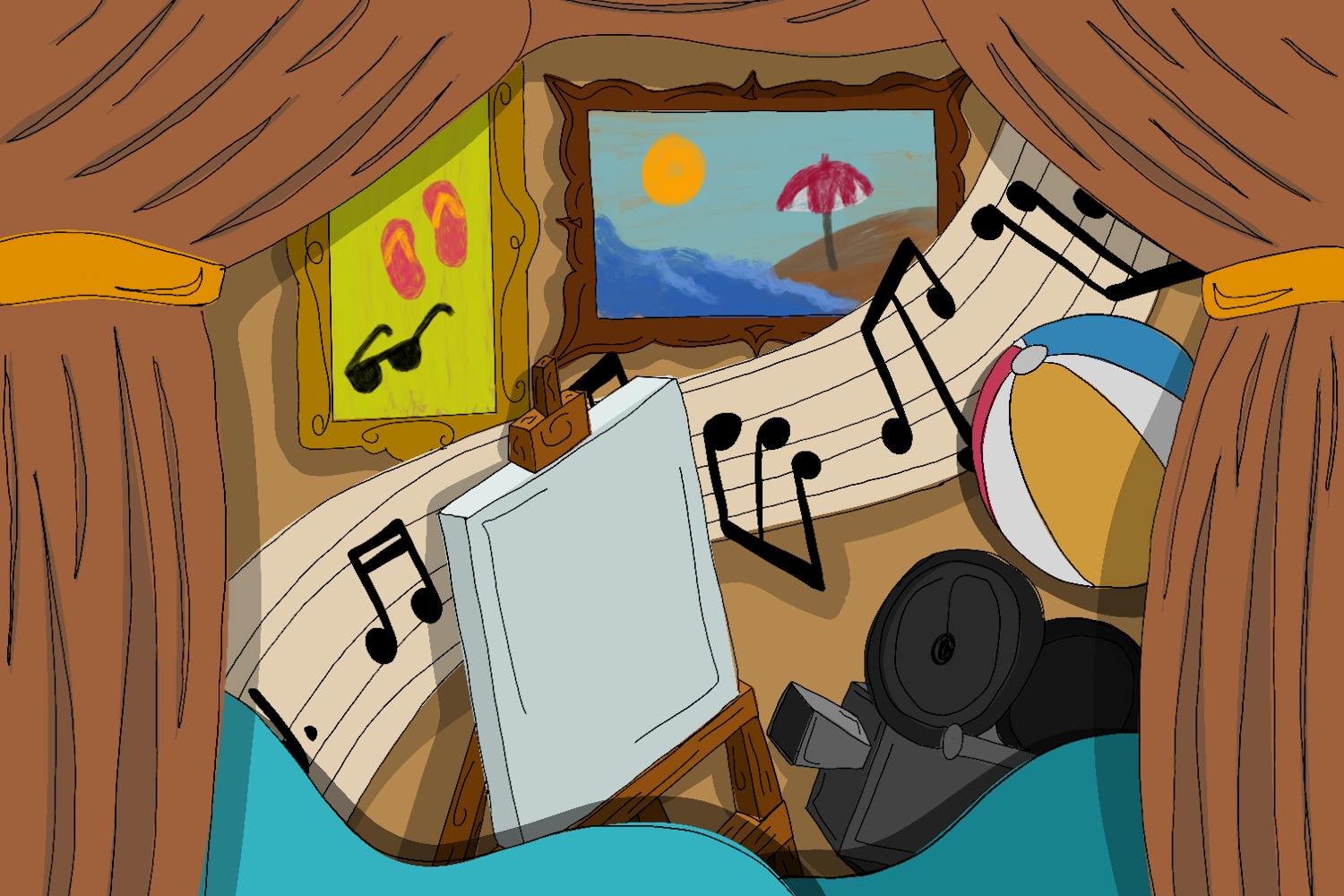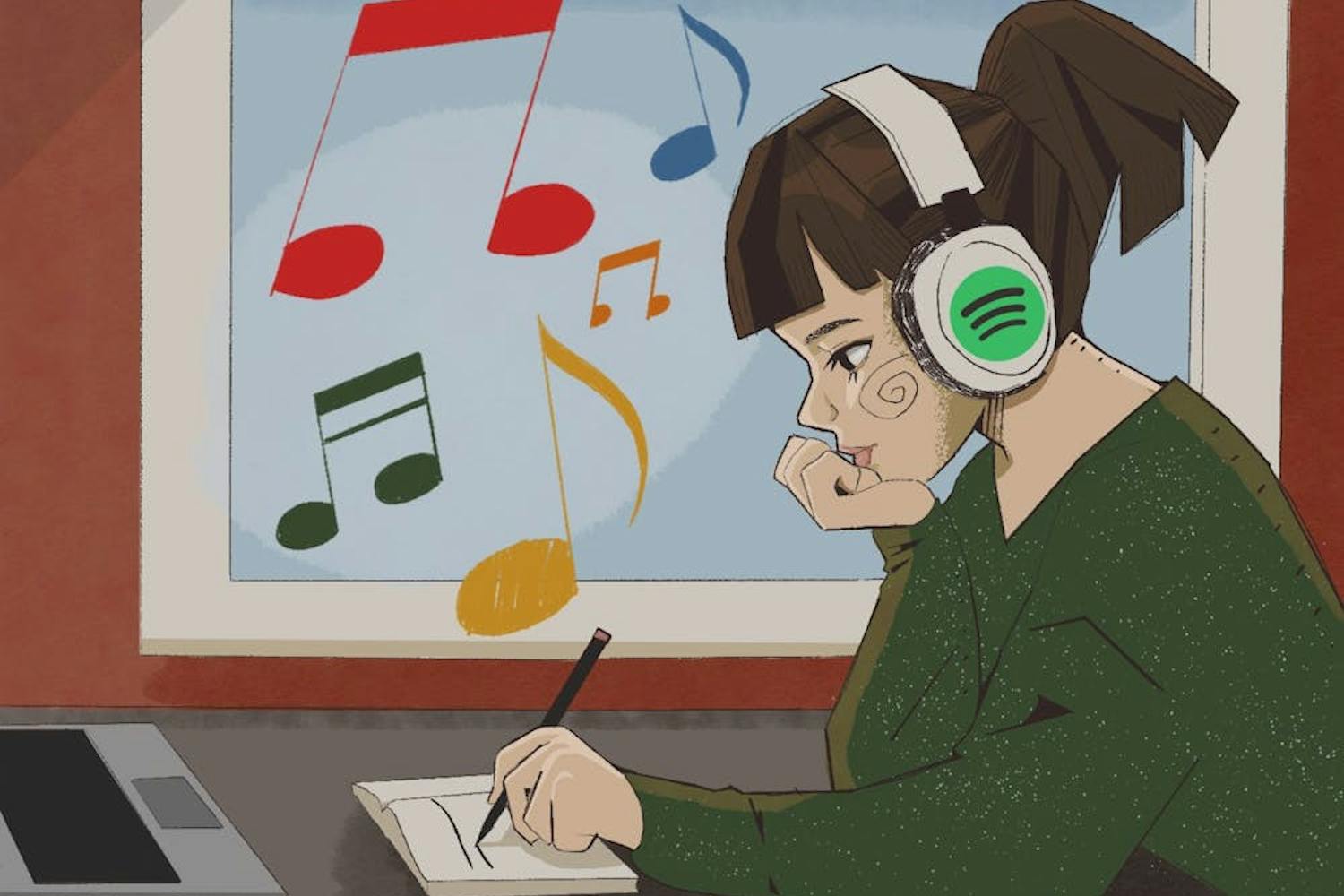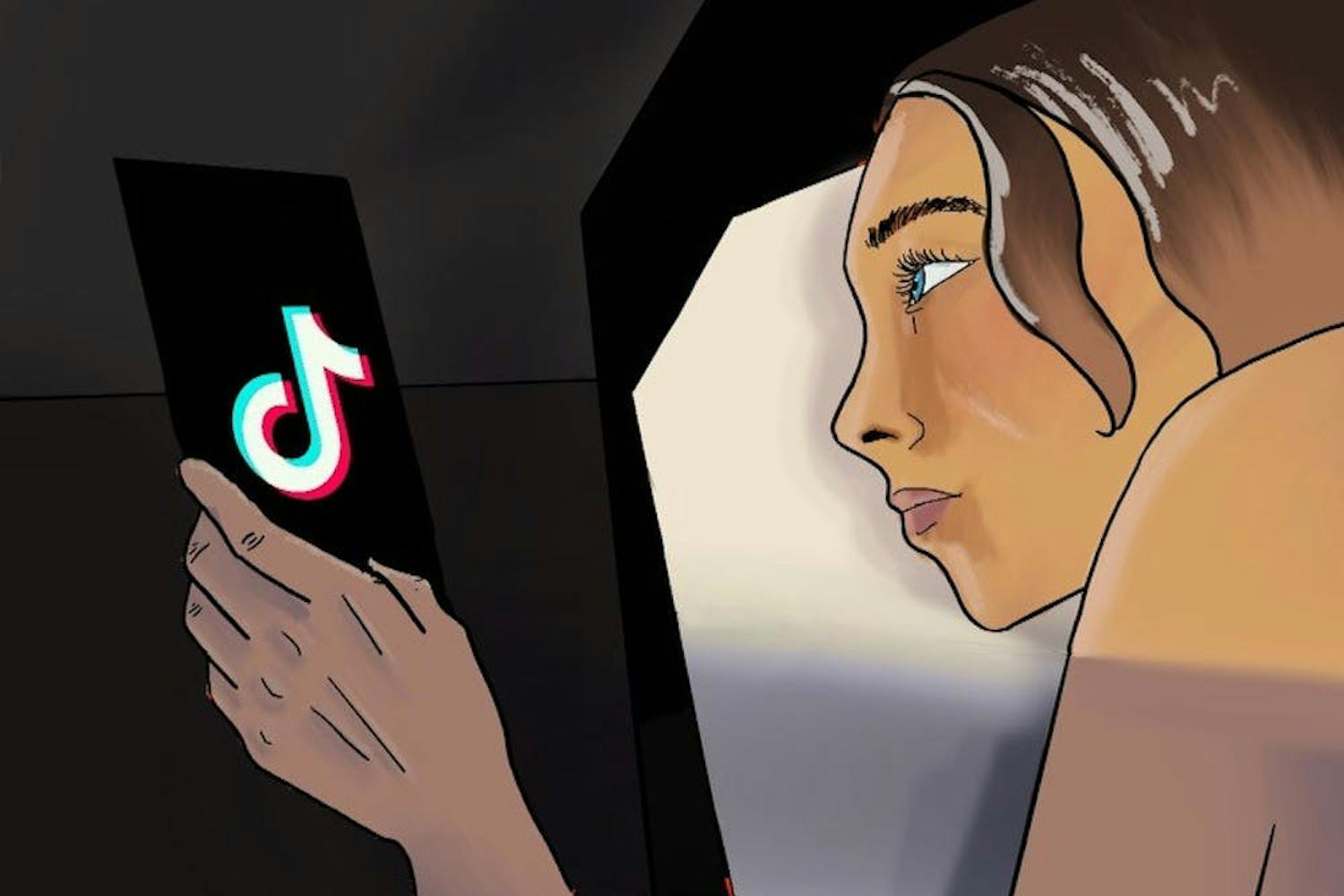At 73, the co-founder of Studio Ghibli, (“Spirited Away,” “My Neighbor Totoro” and "Princess Mononoke”) Hayao Miyazaki, a Japanese master of whimsical animation, has decided to retire. Again. But this time, he says he’s “quite serious.”
While Miyazaki may be more recently known for selling his distribution rights to Walt Disney Studios in 1996, his whimsical animations began as early as 1979. To mark the film-release of Miyazaki's farewell film, “The Wind Rises,” here is a look back at the top 10 films of his career.
10. From Up on Poppy Hill (2011)
This film wrenches its viewers through a strange and only somewhat welcome roller coaster of emotions. The first half of “Poppy Hill” is spent wondering whether its protagonists, the miserably sweet Umi and her aloof yet Cyrano-esque classmate Shun will ever sloppily hold hands in their dilapidated school clubhouse; the second half is dedicated to the revelation that they might be siblings.
More recently, Miyazaki has focused on historical adaptations as opposed to his more iconic fantasy worlds, due mainly to the rising influence and directorial debut of his son, Goro. “Poppy Hill” chronicles Japan’s defeat in the Second World War just as merchant ships were pressed into service by the U.S. Military based on a manga of the same name written by Tetsuo Sayama and Chizuru Takahashi. What’s both very lovely and very troubling about this depiction, however, is the shimmering and bustling light produced in one of its country’s arguably darkest times.
9. “Castle in the Sky” (1986)
“Laputa” as it was originally titled, takes its audience through a steampunk fantasy world where an orphan named Sheeta inherits a mysterious crystal that links her back to a legendary kingdom floating in the sky. As always, Miyazaki's piece derives from several allusions to literature, religion and history. In this case, the name “Laputa” stems from Jonathan Swift’s satirical novel, “Gulliver’s Travels,” where a technologically superior flying island is manipulated for political power; “Sheeta” is a meek modernization of the Hindu goddess “Sita” from the epic “Ramayana,” depicting its heroine (as all women in fiction are) as maternal and pious and the mining town as a fictional representation of 1985 Wales just after a miner’s strike.
While this film was a hit in ‘80s Japan, the release of the English dub was pushed back and finally released in 1999 as the second-best animated film that year, following the iconic “Princess Mononoke.”
8. The Cat Returns (2002)
Golden rule for children’s films — any movie with talking cats is immediate gold. Miyazaki's Excellence Prize winning film follows another endearingly shy high schooler named Haru, who has the suppressed ability to speak to cats and her unwitting betrothal to Lune, Prince of the Cat Kingdom.
While this work may be significantly less gut-wrenching than its companion’s, “The Cat Returns” is just as wonderfully crafted and enchantingly silly, if not more so, than the rest of Miyazaki's collection. It’s possible that this is the only strictly children’s film in Ghibli’s repertoire.
7. Ponyo (2008)
"Ponyo, Ponyo, Ponyo fishy in the sea! Tiny little fishy, who could you really be? Ponyo, Ponyo, Ponyo, magic set you free! Oh she’s a little girl with a round tummy!"
While this work is as goofily enchanting as its theme song, it’s important that I preface it’s placement on this list with a quick confession; I will shamelessly endorse any movie that offers a sassy and voracious eater as its protagonist, especially if she is a mermaid.
This adaptation of Hans Christian Andersen’s “The Little Mermaid” features a chubby and unhappy goldfish who breaks into her wizard/mad scientist father’s potions and turns herself human only to fall in love with a kindergartner named Sosuke. Their love feels more real than the other Ghibli couples, mainly because they spend the majority of their screen time eating fat piles of ham and rice.
Miyazaki worked most closely on the film’s hand-drawn animation, resulting in nearly 170,000 separate images and based his hero, Sosuke, on his son at age five. The name “Ponyo” is an onomatopoeia of what a “soft, squishy softness” represents to Miyazaki. Essentially, this may not be the most compelling of Miyazaki's catalogue, but it’s undoubtedly the most adorable. No. 7, because it would be disingenuous to put it at No. 1 — even if it feels right to me.
6. Howl’s Moving Castle (2004)
Did anyone actually read the Diana Wynne Jones’s novel that this is based on? Probably not, but here are the main differences: Howl is not a crow-like, Han Solo-y renegade fighter so much as an avid and comically vain womanizer, Markl (in the novel “Michael”) is 15 and naively in love with one of Sophie’s sisters, both bafflingly playing the role of Lettie Hatter and Sophie is a grumpy and bumbling old-man-on-his-lawn caricature from the very beginning.
That being said, Miyazaki's piece once again creates a visceral fantasy world complete with friendly demons, horrendously overweight villains and wonderfully self-aggrandized magicians. This anti-war film highlights Miyazaki's talent for giving otherwise two-dimensional characters meat and bones in a fleshy depth unknown to most animation. The complexity of Howl’s moving, groaning, laughably decrepit castle speaks to the loveliness of Miyazaki's capacity; however, it is the balance of heavy subjects with surprising humor that propels this work off the screen and into iconography.
5. Kiki’s Delivery Service (1989)
This flake of sunshine from Miyazaki marks the bridge between Studio Ghibli and the Walt Disney Company. It chronicles the journey of the clumsy yet warm witch-in-training Kiki as she moves away from home and begins an unwitting delivery service, touching on the familiar gap between reliance and independence present in adolescence. It’s set in an idealized, trouble-free Europe, but it depicts its characters as familiarly concerned — Kiki losing her powers to a metaphorical “artist’s block,” the pathetic and sweet Tombo’s attempts for her affection and the overarching feeling of homesickness and ennui.
Miyazaki's brightness and childlike wonder come through again in his first coming-of-age piece, setting the bar for his future films each filled with the same temperance and sincerity.
4. Nausicaä of the Valley of the Wind (1984)
What’s really fantastic about Miyazaki is that not only is he a feminist, but he’s also an environmental activist — both severely lacking in most children’s animations. “Nausicaä of the Valley of the Wind” is the story of a young princess in her struggle against the kingdom Tolmekia in their efforts to eradicate a species of mutant insects. While this was created before the founding of Studio Ghibli, it’s often regarded as the beginning of Ghibli and as part of its works.
In arguably Miyazaki's most detailed setting, the film combines elements from Asimov’s “Nightfall”, Tolkien’s “The Lord of the Rings” and Homer’s “Odyssey” in manifesting a quirky amalgam of fear, fantasy and delusion. Miyazaki's work near pleas with its audience for restorative ethics in combining post-apocalyptic and war recovery.
3. My Neighbor Totoro (1988)
Studio Ghibli’s icon, the goofy fox-like Totoro, recently made an appearance at Mill Avenue’s Valley Art Theatre alongside Miyazaki's lesser known “Grave of the Fireflies.” This piece features several elements of Japanese folklore, most notably Susuwatari — soot spirits that only children can see — the Carroll-esque Catbus and the three versions of the forest spirit, Totoro. There’s a goofy conspiracy out there somewhere that Totoro represents the Grim Reaper and Mei and Satsuki (the spunky and infantile heroines) drown in a nearby pond — Ghibli and Miyazaki write that this doesn’t add up, but the fact that a 26-year-old movie is still gaining rumor is pretty swell.
Major highlights of this piece feature the wandering, rambling baby Mei carrying an ear of corn during a chase scene — Mei being the cutest little critter to ever emerge from a Miyazaki film — Totoro discovering how to use an umbrella, donated to him by the girls during a storm and Kanta the neighbor boy’s horrendously relatable crush on the unwitting Satsuki.
2. Princess Mononoke (1997)
This is an anime epic and period drama set in the Muromachi period of ancient Japan, but with fantasy elements including animal gods, resurrection and, in typical Miyazaki fashion, the plight of men against nature. Unlike his other work, however, and despite the eponymous character San, “Mononoke” features a male protagonist, the super dreamy Emishi warrior, Ashitaka, in his search for the cure to a curse obtained by defending his village from the corrupted boar god, Nago, who was possessed by demons after being shot with an iron bullet.
Miyazaki combines his good-versus-evil saga with the same familiar elements from his other works, feminism, environmentalism and a heavy loss of innocence. It’s more than likely that outside of the Buffyverse, there has been no greater female fighter than the wolf princess, San in her immunity to poison, her lineage to the wolf-god, Moro and her brash encounters with Ashitaka. It’s also important to note that her archenemy, Lady Eboshi is a monarch enigma who appeared and took over the industrial Iron Town through what looks like friendly communism.
1.Spirited Away (2001)
It’s probably not very surprising that Miyazaki’s Oscar winner for Best Animated Feature is No. 1 on this list as “Spirited Away” won not only the award in 2002, but also became the highest-grossing animated feature in Japanese history.
Common to Miyazaki films, the protagonist in this piece — Chihiro and, later, Sen — is a based on a little girl of his acquaintance. Chihiro is a sullen 10-year-old whose sudden move to a new neighborhood prompts her entrance into the spirit world as she attempts to save her gluttonous parents from the witch Yubaba.
Chihiro’s archetypal entrance to the spirit world and the later multi-faceted rescue take on a Wonderland-like parallel in a metaphysical coming of age as she passes through the labyrinth of riddles and tasks presented to her, including the cleansing of the river spirit — representative of Miyazaki’s environmentalism — breaking the curse of Yubaba’s twin, the witch Zeniba and curing the demon No-Face, who takes on the attributes of those around him, as he is corrupted and filled with greed.
Ultimately, the retirement of Hayao Miyazaki marks the end to an era for not only idyllic animation, but for the creation of complex. Miyazaki's farewell film, “The Wind Rises” will be released on Feb. 21 and will be marked in part by swollen theaters, but more importantly, by the sounds of ugly sobbing everywhere.
Reach the reporter at Lindsay.Drucker@asu.edu



